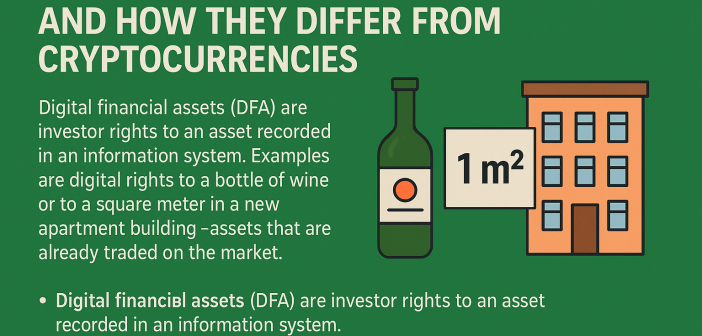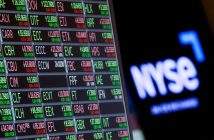Digital financial assets (DFAs) are rapidly gaining traction in Russia, offering a regulated way for individuals and businesses to tokenize and invest in real-world assets. But how do DFAs differ from cryptocurrencies? And what rights do investors get when they buy a DFA?
This article breaks down the essentials of the Russian DFA framework, including its legal basis, market structure, tax treatment, and key differences from traditional crypto.
What Are Digital Financial Assets?
A digital financial asset is a legally recognized digital right to a real-world asset, such as wine, property, art, or receivables. These rights are issued and recorded through an information system operator (ISO) on a private blockchain.
Digital financial assets offer a legally regulated way to tokenize ownership over physical or financial assets and trade them without intermediaries. The use of blockchain and smart contracts ensures secure, transparent, and fast transactions — all fully compliant with Russian law.
DFAs allow investors to own fractionalized rights to physical assets — from square meters in a mall to a bottle of Chardonnay.
DFA vs. Cryptocurrency vs. Digital Ruble
| Attribute | DFA | Cryptocurrency | Digital Ruble |
|---|---|---|---|
| Issuer | Legal entities / entrepreneurs | No centralized issuer | Bank of Russia |
| Blockchain Type | Private | Public | Centralized |
| Legal Status in Russia | Regulated | Not fully regulated | Official state currency |
| Trade Platforms | ISO-approved only | No legal platforms | State digital infrastructure |
| Use in Payments | Not allowed | Forbidden | Permitted |
Key Types of DFAs in Russia
-
Debt DFAs – Fixed or floating income instruments similar to bonds
-
Equity-like DFAs – Ownership in private companies (non-public JSCs)
-
Hybrid DFAs – Claims on physical goods or services (e.g., real estate, wine)
Notable examples include:
-
DFA on wine (“Chardonnay 2019” token, redeemable for a bottle or cash)
-
DFA on modern art (tokenized ownership of a painting)
-
DFA on rental income from KazanMall (fractional square meters with coupon payouts)
How DFAs Work
-
Investors place orders via the ISO platform
-
Smart contracts automatically execute trades
-
Asset ownership is instantly updated in the blockchain registry
-
No brokers, custodians, or third parties are required
This simplifies issuance, speeds up transactions, and reduces costs.
Regulation and Market Snapshot
-
Law 259-FZ defines the rules for issuing, trading, and owning DFAs
-
15 ISO platforms are registered, including Sber, Alfa-Bank, and Atomyze
-
As of Q1 2025, the DFA market reached ₽293.5B, with 998 active instruments
-
69.6% of the market is driven by banks and financial institutions
-
334,700 users registered on DFA platforms (+20% QoQ)
-
78.3% of new DFA releases were open to non-qualified investors
Taxation of DFAs in Russia
-
No VAT on issuance or trading
-
Personal income tax: 13–15%
-
Corporate tax rules vary based on asset structure and redemption conditions
-
Most ISO platforms act as tax agents for retail investors
Pros and Cons of DFAs
Pros
✔️ Lower entry barriers for investors
✔️ Faster capital access for businesses
✔️ Legal clarity and compliance
✔️ Asset-backed tokenization
✔️ Use of blockchain and smart contracts
Cons
❌ Limited liquidity
❌ Constrained access for retail investors
❌ Weak functionality on some platforms
❌ Less stringent issuer disclosure rules




